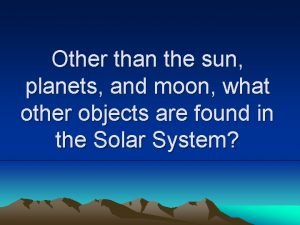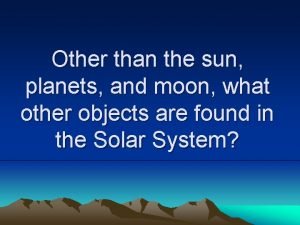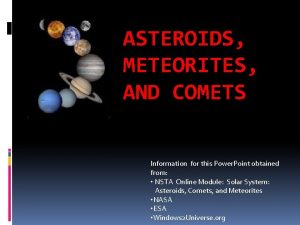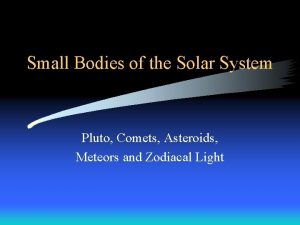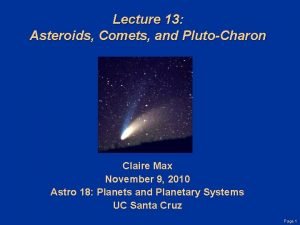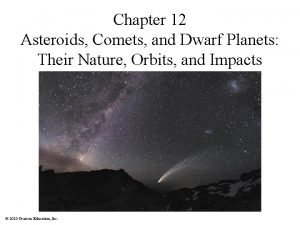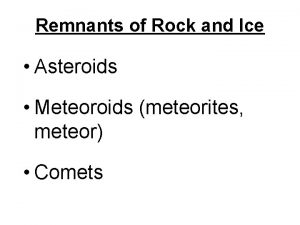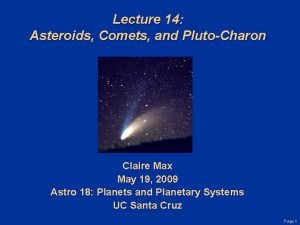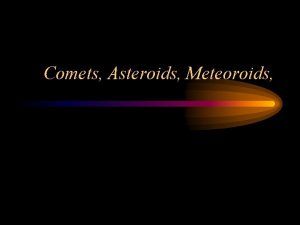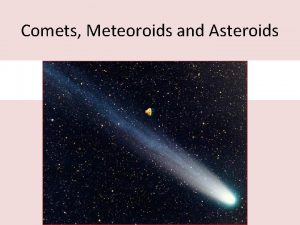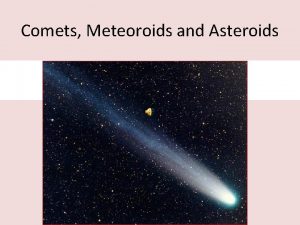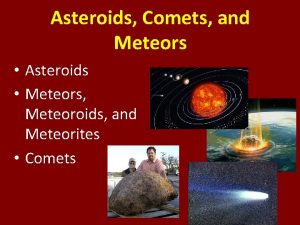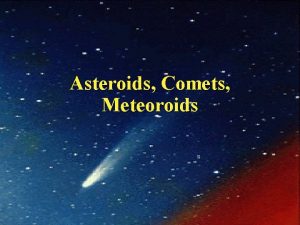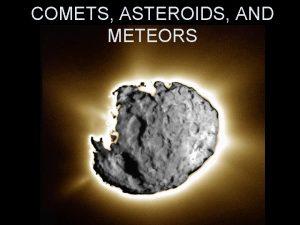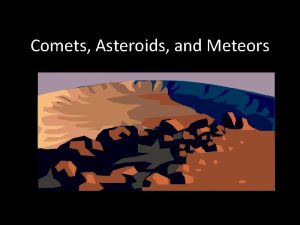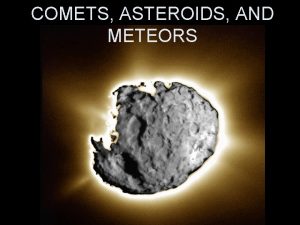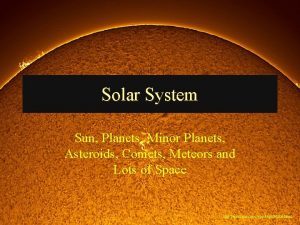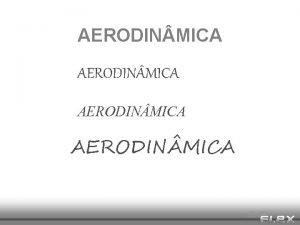MAIN MENU Introduction Planets Stars Asteroids Comets Meteoroids













- Slides: 13

MAIN MENU Introduction Planets Stars Asteroids Comets Meteoroids, Meteors, and Meteorites

What are celestial Bodies? ? Astronomical objects or celestial objects are naturally occurring physical entities, associations or structures that current science has demonstrated to exist in the observable universe. The term astronomical object is sometimes used interchangeably with astronomical body. Typically an astronomical (celestial) body refers to a single, cohesive structure that is bound together by gravity.

Examples are: ØPlanets ØStars ØAsteroids ØComets ØMeteoroids, Meteors and Meteorites

• A planet is a celestial body orbiting a star or stellar remnant that is massive enough to be rounded by its own gravity, is not massive enough to cause thermonuclear fusion, and has cleared its neighbouring region of planetestimals. The term planet is ancient, with ties to history, science, mythology, and religion.

Stars • A star is a massive, luminous sphere of plasma held together by gravity. The nearest star to Earth is the Sun, which is the source of most of the energy on the planet. Historically, the most prominent stars on the celestial sphere were grouped together into constellations and asterisms, and the brightest stars gained proper names.

Asteroids • Asteroids are small solid objects that orbit the Sun. • They are sometimes called minor planets. • The Asteroid Belt is located between Mars and Jupiter is made up of 5, 000 asteroids.

Interesting Facts…. • The average daytime temperature on an asteroid is 212 degrees Fahrenheit. • The average nighttime temperature on an asteroid is – 238 degrees Fahrenheit. • Asteroids have large craters on them. • The really big asteroids have moons. • In 1908 a fireball exploded into Siberia destroying an ancient forest and killing a herd of reindeer

• A comet is like a big dirty snowball made out of water , dust and many different gases. • A comet can travel up to 100, 000 m. p. h.

Parts of a Comet • The three parts of a comet are the nucleus, the coma, and the ion tail. • The tail of the comet always points away from the sun this is because of the strong solar winds.

The Difference • This is the difference between asteroids and comets.

Meteoroids, Meteors, and Meteorites • Meteoroids are small pieces of dust and rock that are found in space. • Meteors are meteoroids that reach the atmosphere. • Meteorites are meteors that reach Earth.

Did You Know? • Meteors are actually debris from comets. • Meteors travel 71 kilometers per second that’s 2, 663 times as fast as a Randy Johnson fastball.

THE END By : Kunal Bhasin Avnish Goyal Himanshu Arora Himanshu Khandelwal
 What is the difference between meteors and comets
What is the difference between meteors and comets Asteroids meteors and comets worksheet
Asteroids meteors and comets worksheet Difference between comets and asteroids and meteors
Difference between comets and asteroids and meteors Comets asteroids
Comets asteroids Comets asteroids
Comets asteroids Outer planets
Outer planets Solar system jeopardy
Solar system jeopardy What is each planet made of
What is each planet made of Inner planets and outer planets
Inner planets and outer planets Why are jovian planets bigger than terrestrial
Why are jovian planets bigger than terrestrial There are three sizes of schnauzer dog
There are three sizes of schnauzer dog Iridium layer
Iridium layer Asteroids
Asteroids An icy leftover planetesimal orbiting the sun is
An icy leftover planetesimal orbiting the sun is
